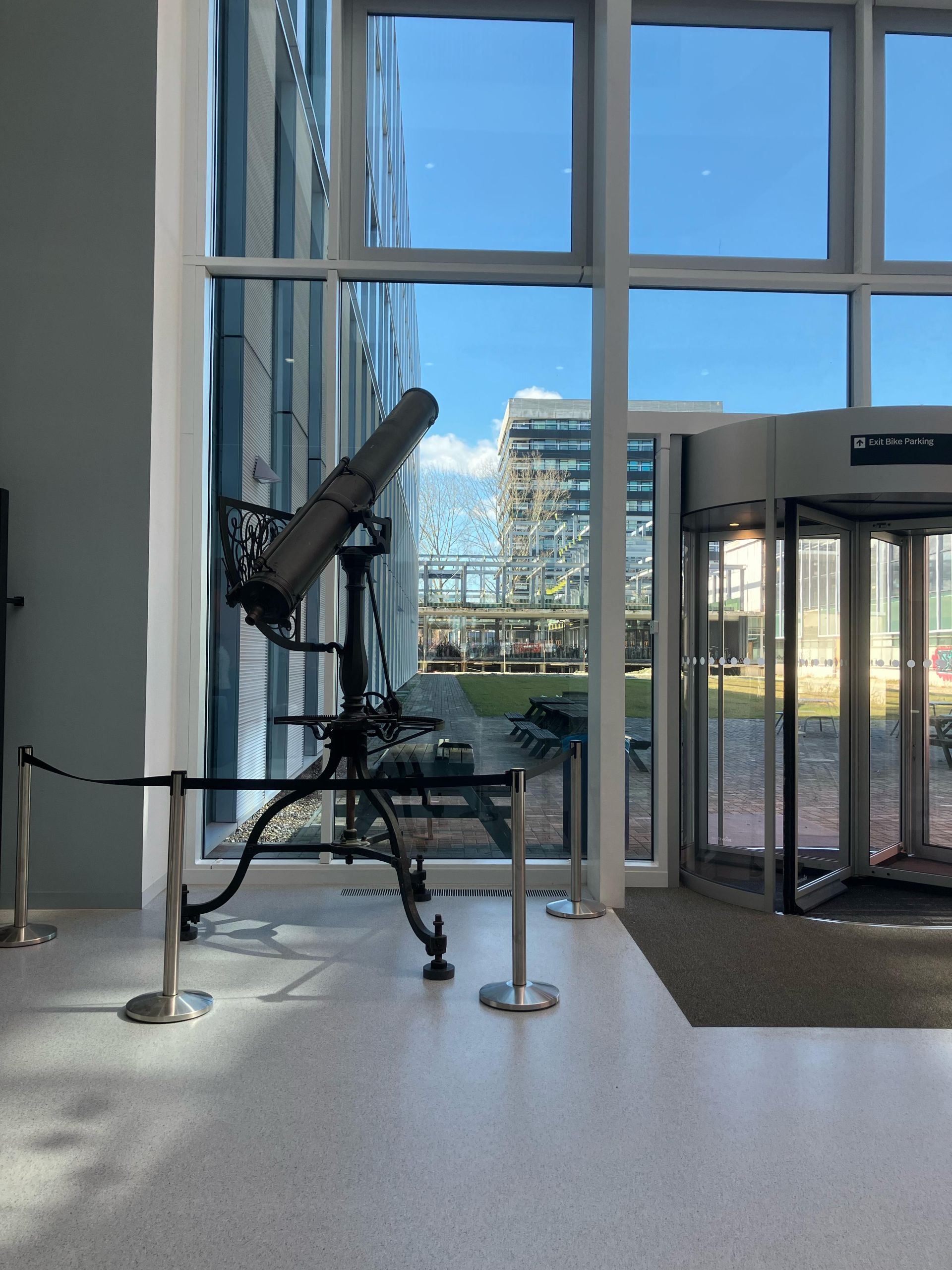The van de Wall Telescope
The Gorlaeus Building houses the Faculty of Natural Sciences of Leiden University, including the Leiden Observatory. When you enter the building through the side door, coming from the bicycle shed, the first thing you come across when entering the building will be the Van de Wall telescope. This impressive-looking telescope is often described as a "cannon on a tripod" due to its sheer size and heavy brass tube. Since 1989 the telescope is in the collection of Museum Boerhaave, but it's housed in this building and not the museum for most of its Leiden Observatory donorship. It was once the largest telescope in the world. The telescope is estimated to date back to the 1750s and is known to have been built by the wealthy merchant and hobby astronomer Jacobus van de Wall. It has a mirror diameter of 23 centimeters and is said to have been very good for its time.
One would expect that this state-of-the-art technology would have been instrumental to many important discoveries in the astronomy, but unfortunately, this is not the case. Van de Wall was interested mainly in the technical aspects of telescope and cared little for observing the sky. This 'gentleman-scientist’ devoted himself to scientific endeavours, but these were shaped by social desirability rather than scientific curiosity. On top of that, he did not like to have nightly visitors, and hence very few professional astronomers looked through the instrument. The only confirmed account of anyone doing observations with the telescope is from the Danish astronomer Thomas Bugge in 1777. He described it in his journal and made a drawing of Saturn as seen through the telescope.
After Van de Wall's death in 1782, the telescope was donated to Leiden Observatory. At this point, it was no longer the world's largest telescope, as a larger one, the Hershel telescope, had been made in Britain, but it was still the largest in the Netherlands and very much usable for science. Unfortunately, at this time the observatory was led by Dionysus van de Wijnpersse, a man who cared little for astronomy and focused mainly on mathematics. The observatory and its instruments crumbled under neglect and misuse until 1826 when Frederik Kaiser took over the observatory.
Unfortunately, this was too late for the Van de Wall telescope, as its mirror had completely corroded over and its joints lost all their nimbleness. Due to its sheer size and impressive stature, Kaiser and his successors decided to keep the telescope as an ornament. It is even said that the famous cosmologist and personal friend of Albert Einstein, Willem de Sitter, used this telescope as his personal coat hanger and hat stand. In 2025 the telescope was moved to its current location in the Gorlaeus Building, where it stands to this day.
Reference: A biography of a virtually unused telescope and Collectie Boerhaave